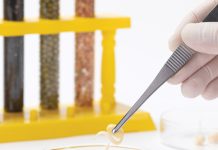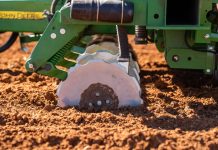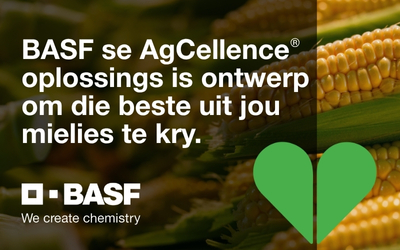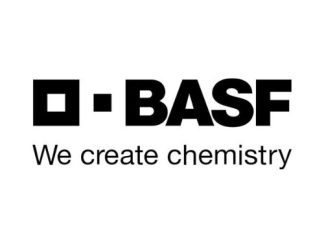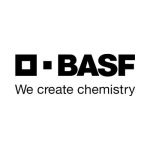Groundnut (Arachis hypogaea L.) remains one of the most important oilseed crops in the world, especially because it satisfies the protein needs of many households in developing countries that cannot afford animal protein. Production and consumption of groundnut are hampered by Aspergillus flavus and A. parasiticus infections, which subsequently produce and contaminate groundnut consignments with aflatoxins.
Aflatoxins are often associated with acute and chronic toxicities in both humans and animals inducing tumours, liver damage, as well as carcinogenic and immunosuppressive effects. Aflatoxin contamination can occur in the field before harvest and after harvest during curing, storage, and transportation. Agronomic practices such as crop rotation, use of resistant varieties, insect and weed control, timely planting and harvesting, adequate fertilisation, and late-season irrigation are currently implemented to reduce pre-harvesting aflatoxin production.
Additionally, atoxigenic Aspergillus strains can also be applied in the field to competitively displace and reduce the toxigenic Aspergillus population in the soil. This article will focus on this concept as an alternative management tool that can be used in combination with current tools to manage the occurrence of aflatoxins on groundnut.
Biocontrol of aflatoxin contamination
Biocontrol is the most successful method used for the control of aflatoxins in Africa. To significantly reduce aflatoxins, it is necessary to target the Aspergillus spp. that produce aflatoxins. Based on their morphology, Aspergillus flavus are subdivided into S and L strains. The S strains produce small sclerotia and high levels of aflatoxins while the L strains produce large sclerotia and low levels of aflatoxin. Within these L strains, atoxigenic strains that cannot completely produce aflatoxins due to some genetic variations occur.
The application of atoxigenic Aspergillus strains (non-aflatoxin producers) in the field is based on the principle that it can naturally outcompete toxigenic Aspergillus strains (aflatoxin producers) by reducing its growth, which will directly lead to a reduction in aflatoxins. The atoxigenic strains compete with the naturally occurring toxigenic strains in the same niche for space, crop substrates, and nutrients required for toxin production.
Moreover, these atoxigenic strains additionally provide a carryover effect that can protect groundnuts from post-harvest aflatoxin contamination. The use of these atoxigenic Aspergillus strains against toxigenic strains successfully controls aflatoxin production and contamination in African fields pre-harvest and during storage. Cotty and Bayman (1993) implemented this strategy for the first time in the USA, after which it has been employed for the control of aflatoxins around the globe for more than two decades. Several African countries, including Senegal, Gambia, Nigeria, Kenya, Burkina Faso, Tanzania, Zambia, Malawi, and Mozambique have benefited from this USA principle through the development of a product called Aflasafe (Figure 1).
Aflasafe has been adapted for Africa through the use of extensively tested local Aspergillus spp. Moreover, the potency of African Aflasafe has been increased through the combination of not only one but four different strains.
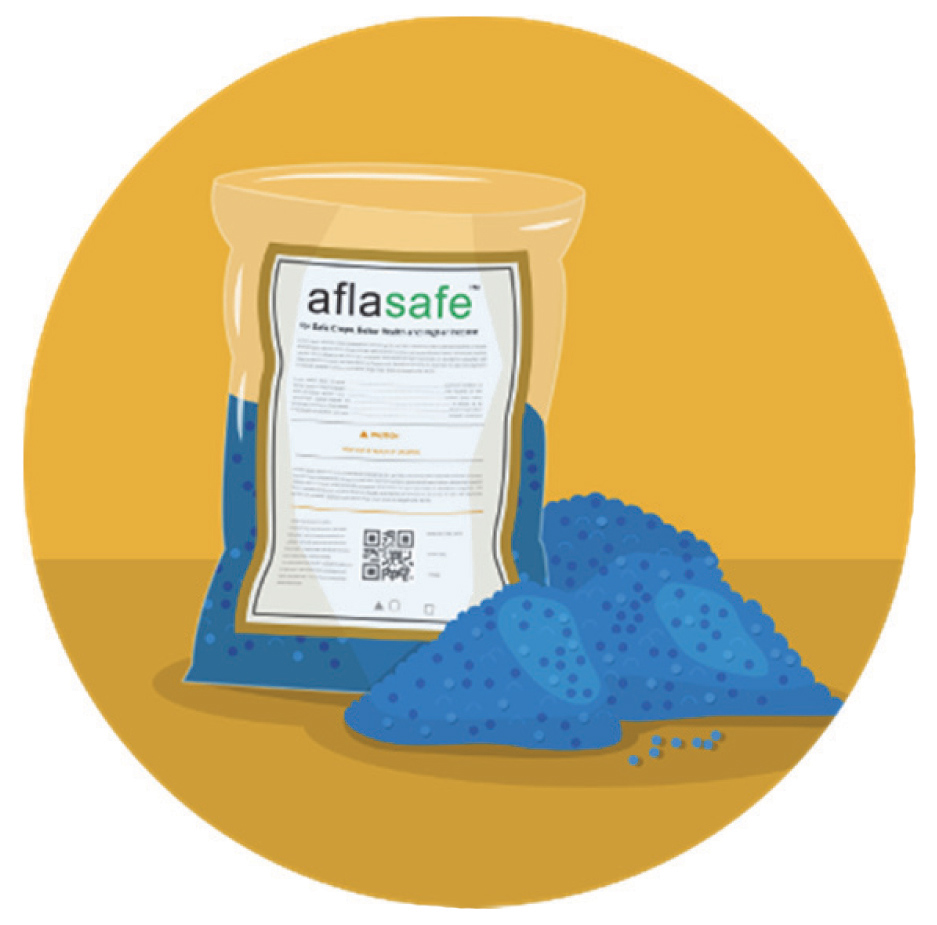
Photo: Cotty & Bayman, 1993
Mechanism of this technology
Each African country has its own version of Aflasafe, consisting of a mixture of four locally occurring atoxigenic Aspergillus strains naturally present in their respective soils. These atoxigenic fungi are used to coat sorghum grain, which in turn serves as food for the fungi to help them get established. A single application of Aflasafe 30 to 35 days after planting by side-dressing along the rows on the soil surface is adequate during a growing season, because the population of the toxic Aspergillus strains that produce aflatoxin is still low at that specific time and not yet established in the field. A few days after Aflasafe application, when there is adequate moisture in the soil, the atoxigenic Aspergillus strains multiply quickly and in large numbers (within two to three days) and form spores. These spores spread throughout the field, displacing aflatoxin-producing Aspergillus spp and protecting the groundnuts from poisonous aflatoxins. Results to date indicate that all Aflasafe products, registered and under experimental use, reduce aflatoxin concentrations in treated crops by >80% compared to those not treated under both field and storage conditions. Even though Aflasafe is a viable solution to the aflatoxin challenge, it works best when applied in combination with other good practices such as proper drying and storage of the groundnuts.
Benefits of aflatoxin biocontrol technologies
Aflasafe prevents dangerous levels of aflatoxin contamination to ensure that food meets public safety standards. The benefits of Aflasafe include, but are not limited, to the following:
- It is a highly effective product that cuts aflatoxin levels by 80 to 100%, placing treated food within safety limits.
- It is effectively used as a single, protective application from field to plate.
- The product prevents harvest losses because there are no contaminated kernels that should be removed, and such a consignment needs no further processing steps.
- As Aflasafe is active throughout the growing, storage, and transportation stages until the food is consumed, there is little risk of consuming unsafe food.
Prospects for South Africa
In South Africa, aflatoxin contamination is still a challenge and since prevention is better than control, a lot of energy and time have been devoted to the development of aflatoxin formation reduction methods. Up to now this was done mostly through traditional approaches using plant breeding. Unfortunately, no groundnut variety is completely resistant or immune to Aspergillus species, but some moderately resistant varieties are available on the market. Therefore, a more promising, preventive approach was investigated such as the addition of atoxigenic strains of A. flavus and/or A. parasiticus to groundnut fields so that they can successfully compete with the naturally occurring toxin-forming strains.
 However, Aflasafe technology does not exist specifically for South Africa using non-toxic South African strains yet. Therefore, the ARC-Grain Crops, in collaboration with the Department of Agriculture, is currently running a project on developing an Aflasafe product specifically catering for South Africa. To achieve this, more than 2 000 isolates from different groundnut growing areas across the country need to be screened. Based on this, local producers are requested to assist with pod samples for fungal isolation. Hopefully, it will be possible to identify non-aflatoxigenic strains from these isolates to be included in a product tailor-made for South Africa. All information obtained from producers will be regarded as confidential; the main goal is only to search for atoxigenic Aspergillus strains and not to identify sites with Aspergillus contamination.
However, Aflasafe technology does not exist specifically for South Africa using non-toxic South African strains yet. Therefore, the ARC-Grain Crops, in collaboration with the Department of Agriculture, is currently running a project on developing an Aflasafe product specifically catering for South Africa. To achieve this, more than 2 000 isolates from different groundnut growing areas across the country need to be screened. Based on this, local producers are requested to assist with pod samples for fungal isolation. Hopefully, it will be possible to identify non-aflatoxigenic strains from these isolates to be included in a product tailor-made for South Africa. All information obtained from producers will be regarded as confidential; the main goal is only to search for atoxigenic Aspergillus strains and not to identify sites with Aspergillus contamination.
Please contact Dr Henry Njom at 018 299 6225 or Dr Belinda Janse van Rensburg at
018 299 6357 for further information or to arrange collection of samples.





